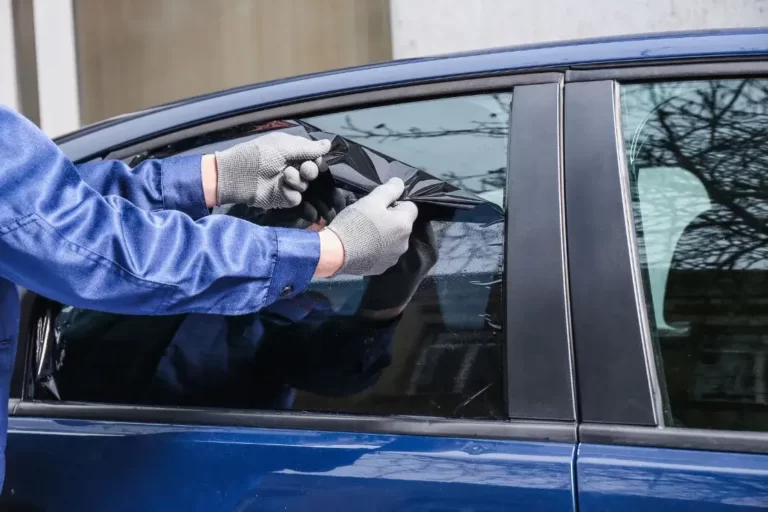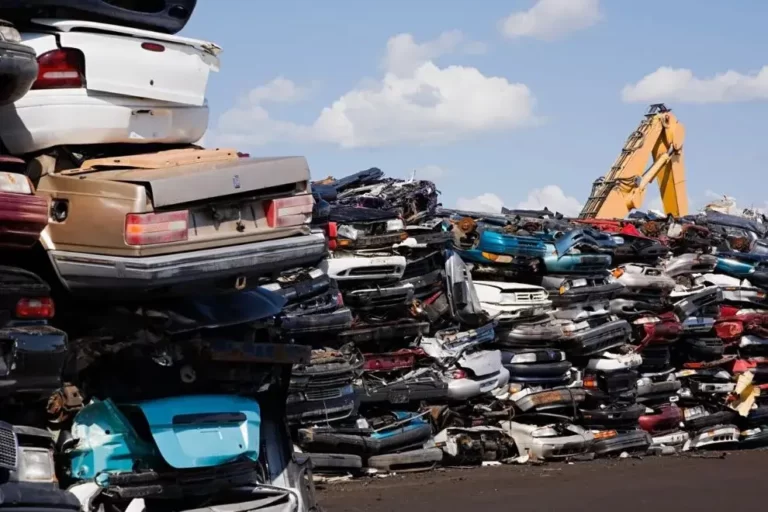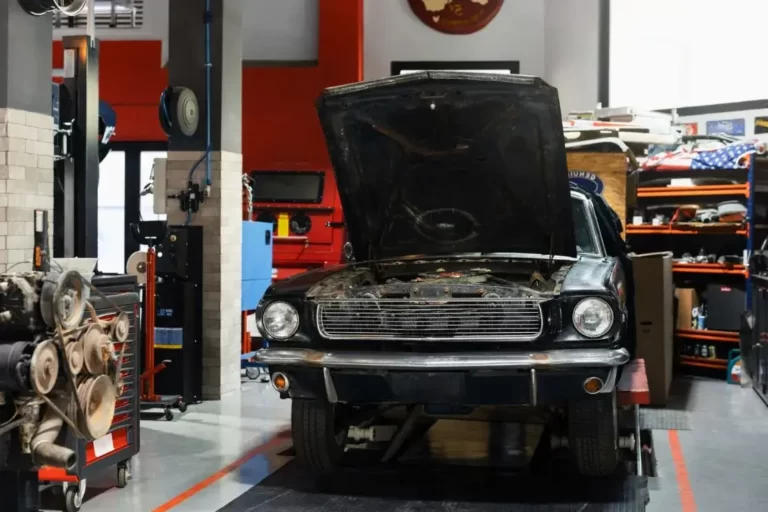How To Prepare Your Car For A Long Road Trip In Australia
Learning how to prepare your car for a long road trip in Australia is crucial for the safety and comfort of all passengers. This blog post highlights the vital steps to appropriately prepare a car for such a journey, as experienced automotive repair technicians advised.
Covering aspects such as verifying fluid levels, performing routine maintenance, and gathering emergency supplies, this guide offers a comprehensive overview of the necessary preparations before embarking on a long-distance adventure.
Check The Fluids
Before setting off on a long road trip in Australia, car owners must prepare their vehicles adequately. One of the essential steps in this preparation process is checking and maintaining all the fluids in the car. The juices that require attention include oil, coolant, transmission fluid, and windshield washer fluid.
Regularly examining these fluids ensures that the engine runs smoothly and contributes to fuel economy. Low fluid levels or dirty fluids can cause increased engine wear, overheating, or even breakdowns, leading to costly repairs and inconvenience during the trip.
In addition, checking and topping off windshield washer fluid ensures drivers can maintain a clear view of the road, especially in dusty or rainy conditions. Adequate windshield washer fluid levels can also help prevent windshield wiper damage, further enhancing driver safety.
Generally, car owners should check their vehicle’s fluid levels at least once a month and before any long road trip. If any fluids are low, they should be topped off immediately with the recommended fluid type, as indicated in the car’s manual. In case of emergency, it is also advisable to have a spare container of each fluid in the trunk.
Change The Oil
To ensure an optimal level of engine performance and reliability during a long road trip in Australia, it is essential to check and replace your vehicle’s oil and oil filter. Engine oil is responsible for lubricating and cooling the engine. In contrast, the oil filter helps to remove any contaminants from the oil, preventing damage to the engine.
Checking Oil Level
Before embarking on a long road trip, it is essential to check the car’s oil level. To do this:
- Park the vehicle on a flat surface and wait for it to cool down.
- Locate the dipstick, remove it, and wipe any excess oil with a cloth.
- Reinsert the dipstick and remove it again to check the reading.
Using the correct type of oil for your vehicle is essential, as different engines require different types of fat. The oil level should be between the minimum and maximum markings on the dipstick. If necessary, add more oil until you reach the appropriate level.
Replacing Oil Filter
Replacing the oil filter regularly is recommended as part of routine maintenance. Locate the filter under the vehicle near the engine block to do this. Carefully remove it using an adjustable wrench or socket set, then unscrew its cap by hand.
Before installing a new oil filter, inspect the air filter and spark plugs for signs of wear. This step ensures optimal engine performance and efficiency during your long road trip to Australia.
Professional Assistance
It is advisable to have the oil level and filter replaced professionally by an automotive repair technician. A qualified technician can ensure that the correct type of oil and filter is used and that the replacement process is carried out correctly, preventing any issues or malfunctions during the trip.
Tire Check And Tire Pressure
Before commencing a long road trip in Australia, examining your vehicle’s tires and tire pressure is crucial. Inspect tire alignment for uneven tread wear and any damage caused by potholes.
Additionally, evaluate wheel balance for potential issues that could result in an uncomfortable ride or premature failure of components due to vibrations.
To guarantee safe travels, follow these tips when conducting a tire check:
- Examine the sidewalls of each tire for cracks, bulges, punctures, and foreign objects embedded in them.
- Inspect the tread pattern and watch for signs of uneven wear, which could suggest improper wheel alignment.
- Measure the air pressure inside all four tires using an accurate gauge; ensure this aligns with the manufacturer’s specifications in your vehicle owner’s manual.
- Rotate each tire according to its specified direction indicated on the sidewall; this assists in evening out wear patterns over time while also preventing flat spots from developing.
Remember, proper tire maintenance before a long journey can minimize risks associated with automotive travel, such as breakdowns and accidents due to poor handling or structural deficiencies.
Inspect Braking System
Your vehicle’s braking system is undoubtedly one of the most critical safety components. It is responsible for slowing down and stopping your car promptly and efficiently, especially during emergencies.
Therefore, ensuring that your car’s braking system is in excellent condition before hitting the road is essential.
Regularly inspecting and maintaining the braking system guarantees optimal performance and enhances driver and passenger safety.
Check Brake Fluid Levels
The braking system is vital for the safety of your vehicle during extended road trips. Ensuring its proper functionality involves regularly monitoring brake fluid levels. It’s crucial to inspect the entire braking system for any unusual wear or damage, particularly along the hoses and lines connected to the master cylinder.
These components transmit hydraulic pressure when the pedal is pressed, activating the callipers to create friction with the rotors and stop your vehicle.
Verifying adequate brake fluid levels in both reserve tanks and checking for leaks ensures optimal performance throughout your journey.
Inspect Brake Pads/Shoes
A comprehensive braking system inspection should include evaluating the rotors and pads/shoes. The rotor, situated within the wheel assembly, is a critical component in decelerating or stopping your vehicle when pressure is applied to the pedal.
Inspect the rotor for any abnormal wear or damage, such as grooves or deep scratches, which may indicate excessive heat generated during regular use.
The replacement may be necessary if there are other options than resurfacing. Pads and shoes, making direct contact with both sides of the rotor, slow down its rotation during deceleration.
These components should also be closely inspected for signs of wear that could impact their functionality. Replace them as needed to maintain optimal brake performance during your road trip.
Test Brake Performance
Assess the braking system, and review safety standards to ensure the vehicle is roadworthy. Test the brakes for proper performance using appropriate equipment, including checking pedal pressure, measuring stopping distances, and evaluating brake response time with specialized tools such as a dynamometer or skid tester.
Address any discrepancies immediately before proceeding with further maintenance procedures. Accurate inspection and testing of all components assure drivers that their vehicles are reliable and prepared to handle any situation on the open road.
Pack Essential Supplies
After ensuring the braking system is in optimal working condition, it’s time to pack essential supplies for a long road trip. Consider factors like weather conditions and journey length when packing items for the car.
Include essential items in any emergency kit: a spare tire, jumper cables, flashlights with extra batteries, flares or reflective triangles, and tools such as pliers and wrenches.
Breakdown cover can also be invaluable during unexpected road situations. Keep an up-to-date first aid kit with bandages, antiseptic wipes, and antihistamines.
Pack drinking water and snacks for potential delays or breakdowns. Lastly, ensure the vehicle has adequate fuel levels before departing.
Check Vehicle Lights
A well-prepared road trip can be an exciting adventure. To ensure safety and success, check vehicle lights before departure. Inspect headlights, brake lights, turn signals, hazard lights, and interior lighting.
Also, examine wiring connections and lamp housings and lenses for signs of wear or damage that could impair visibility. Consider these tips when checking vehicle lights:
- Examine all bulbs individually for proper operation by turning them on and off multiple times while visually assessing performance.
- Inspect wiring connections between lamps and sockets, ensuring they are secure and free from corrosion or rust buildup.
- Clean headlight lenses with approved cleaning solutions to maximize nighttime visibility.
- Adjust headlights according to manufacturer specifications to enhance overall road visibility.
Hit the Road with Confidence: Additional Long Distance Road Trip Checklist
In addition to the crucial areas of car maintenance discussed above, there are a few more items to add to your long-distance road trip checklist.
- Clean and tighten all battery connections
- Use a multimeter or voltmeter to check for voltage drop when turning on various components.
- Address any problems noticed promptly with the help of an automotive technician.
- Inspect tires inside and out for proper inflation pressure and wear pattern characteristics.
- Consider having tires balanced for a comfortable ride.
- Ensure all areas are inspected and fixed accordingly before departure.
- Enjoy a safe and stress-free road trip through Australia.
Conclusion
Before embarking on a long road trip in Australia, check the vehicle’s fluids and oil. Inspect tires for wear and tear and ensure proper tire pressure. Examine the braking system and confirm all components are functioning well. Lastly, verify all vehicle lights are working correctly for clear visibility.
Pack essential supplies like tools, spare parts, and an emergency kit. Preparing a car for a long road trip will contribute to safe, efficient, and enjoyable travels.
Frequently Asked Questions
What should I check before embarking on a long road trip in Australia?
A: Before setting off, it is vital to check and maintain all the fluids in the car, including oil, coolant, transmission fluid, and windshield washer fluid. Additionally, inspect the battery and electrical system, tires, braking system, and vehicle lights. Pack essential supplies for emergencies and ensure your vehicle is roadworthy.
How often should I check my vehicle’s fluid levels?
A: As a general rule, car owners should check their vehicle’s fluid levels at least once a month and before any long road trip. If any fluids are low, they should be topped off immediately with the recommended fluid type, as indicated in the car’s manual.
What should I do if my vehicle’s fluid levels are low?
A: If any fluids are low, they should be topped off immediately with the recommended type of fluid, as indicated in the car’s manual. In case of emergency, it is also advisable to have a spare container of each fluid in the trunk.
How can I ensure my vehicle’s braking system is in good condition for a long road trip?
A: Regularly inspecting and maintaining the braking system guarantees optimal performance and enhances driver and passenger safety. Check brake fluid levels, inspect hoses and lines connected to the master cylinder for any wear or damage, evaluate the rotors and pads/shoes, and test brake performance using specialized equipment.
What should I pack for a long road trip?
A: Consider factors like weather conditions and journey length when packing items for the car. Include essential items in any emergency kit: a spare tire, jumper cables, flashlights with extra batteries, flares or reflective triangles, and tools such as pliers and wrenches. Breakdown cover can also be invaluable during unexpected road situations. Keep an up-to-date first aid kit with bandages, antiseptic wipes, and antihistamines. Pack drinking water and snacks for potential delays or breakdowns.
How can I ensure my vehicle lights work correctly for a long road trip?
A: Before departure, inspect headlights, brake lights, turn signals, hazard lights, and interior lighting. Examine wiring connections and lamp housings and lenses for signs of wear or damage that could impair visibility. Examine all bulbs individually for proper operation, inspect wiring connections between lamps and sockets, clean headlight lenses with approved cleaning solutions, and adjust headlights according to manufacturer specifications to enhance overall road visibility.
Q: What are some road trip tips for preparing my car for a long journey in Australia?
A: Before your journey, ensuring your car is in good working order is important. Check your tyres, lights and indicators, windscreen, and motor, and make sure your car insurance is up to date. Having a car service before you leave is also a good idea.
Q: How important is checking my tyres before embarking on a long road trip in Australia?
A: Checking your tyres is crucial before any long drive, especially in Australia, where you may be driving through remote areas. Ensure your tyres are in good working order and have the right amount of tread. Consider packing a spare tyre and the necessary tools to change it in a roadside emergency.
Q: Is it a good idea to have roadside assistance when going on a road trip in Australia?
A: Yes, it’s always best to have roadside assistance or a breakdown service when heading away from home. This is especially true if you plan on driving through outback areas with long distances between towns and services.
Q: What should I do if I break down in the middle of nowhere during my road trip around Australia?
A: If you break down in a remote area, stay with your vehicle and make sure you don’t attempt to walk or hitchhike. Ensure you have a fully charged mobile phone, water, and food supplies. Call your roadside assistance provider or, if you don’t have one, call the local authorities.
Q: Should I rent or use my car for a long road trip in Australia?
A: If your car is in good working order and suitable for a long trip, it’s best to use your vehicle. This way, you’re familiar with how it handles, and you can ensure it’s properly serviced and maintained before leaving. However, if you need a suitable car or prefer not to put wear and tear on your vehicle, consider renting a car or camper van.
Q: What should I consider when planning a road trip around Australia?
A: When planning a road trip around Australia, consider the length of your trip, your budget, the type of vehicle you’ll need, the seasons and weather, and the route you’ll take. Research the destinations you’d like to visit and plan accommodation and food stops.
Q: Is having a caravan or camper van necessary for a long road trip in Australia?
A: No, having a caravan or camper van for a road trip in Australia is unnecessary. However, a camping vehicle can make the experience more comfortable and convenient if you plan on camping or sleeping outdoors.
Q: How important is having a good view of the road ahead during a road trip in Australia?
A: A clear view of the road ahead is essential during a road trip in Australia. Ensure your windscreen is clean and free of cracks or chips. Check your wiper blades and replace them if necessary.
Q: How should I prepare my car battery for a long trip to Australia?
A: Before leaving, check your car battery to ensure it’s in good working order. If it’s old or showing signs of wear, consider replacing it before you go. Also, ensure you have jumper cables on hand in case of a dead battery.
Q: Is it essential to have car rental insurance when renting a car for a long road trip in Australia?
A: Yes, it’s important to have car rental insurance when renting a car for a long road trip in Australia. Accidents can happen at any time, and car rental insurance can provide peace of mind and financial protection in case of an accident or damage to the vehicle.







